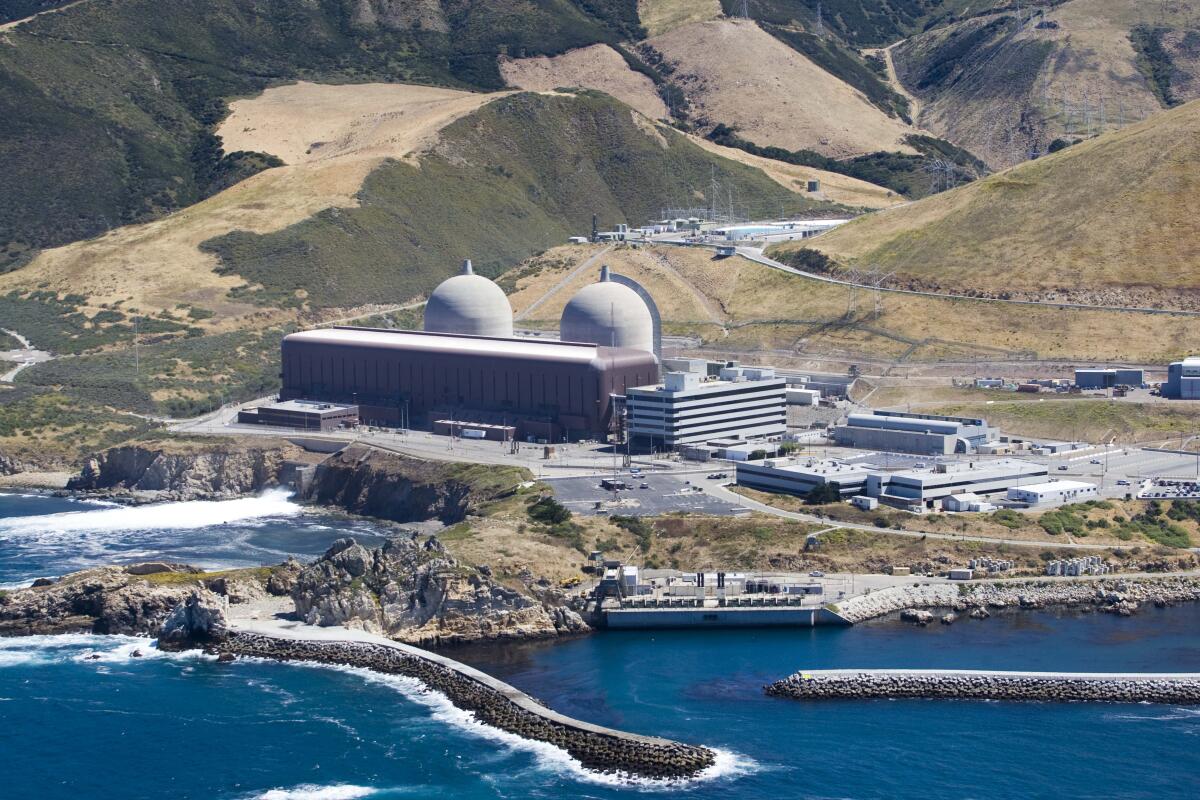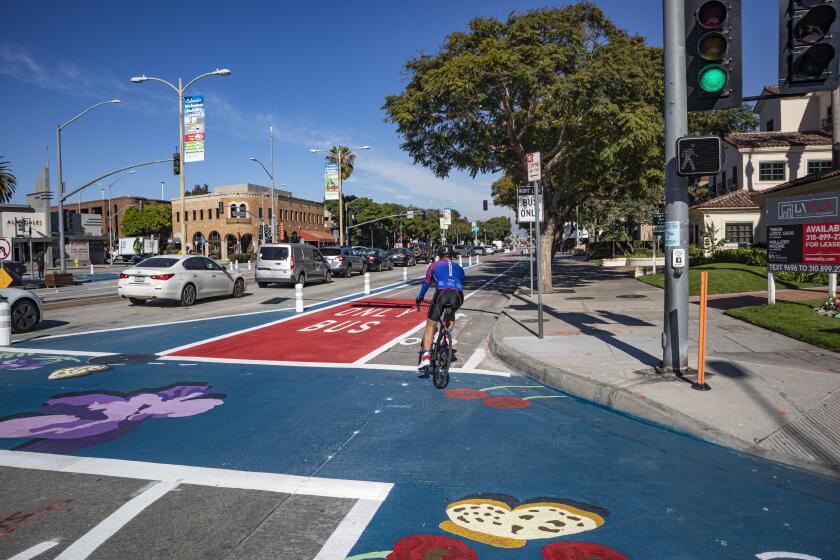10 more years of nuclear power? Gov. Newsom needs to make the case

- Share via
With only a few weeks left before state lawmakers adjourn for the year, Gov. Gavin Newsom is making a last-minute push to extend the life of California’s last nuclear plant.
Newsom’s proposal, released last week, would allow the Diablo Canyon nuclear plant on the Central Coast to keep operating until 2035, 10 years after its planned closure in 2025. The governor has argued that running the plant’s two nuclear reactors for another decade would be a stopgap measure to help California keep the lights on when power demand surges on hot summer evenings and fight climate change by preserving an around-the-clock source of carbon-free electricity until more renewable energy comes online.
But giving new life to nuclear power is such a big change, with so many trade-offs, that Newsom needs to make the case that his plan will support the state’s transition to renewable energy, rather than slowing it down, will actually prevent blackouts and will avert more environmental risks than it prolongs.
This board has argued against extending the life of the aging plant, based not only on the environmental and seismic hazards but the practical realities of getting it relicensed and approved to stay open beyond 2025. Under current law, that would require Pacific Gas & Electric Co. to spend billions of dollars to upgrade its marine life-killing seawater cooling system and address seismic safety, including concerns that an earthquake could cause the release of deadly radiation. Such efforts and resources could be put to better use accelerating the deployment of renewable energy and storage projects, which not only are less expensive than nuclear but also are what we need to be doing anyway to prevent a catastrophic warming of the planet.
Newsom’s draft legislation seeks to avoid some of these obstacles, by giving PG&E a $1.4-billion forgivable loan to help pay for permitting and to access federal funds. The proposal also postpones the plant’s compliance deadline to stop sucking up ocean water for cooling, and exempts the plan from environmental review and other rules that could stand in the way.
The governor has been scrambling to secure the state’s power grid against blackouts during hot summer evenings when risk of energy shortfalls is highest because solar power drops off but demand for cooling persists. In June he pushed through another polarizing piece of legislation that seeks to prevent outages by, among other things, accelerating permitting of energy projects and creating a strategic reliability reserve that makes it easier for state officials to deploy gas and diesel generators and buy electricity from coastal gas plants that are also scheduled to close in the coming years.
Officials with the governor’s office argue that both the reliability reserve and Diablo Canyon are last-resort options that they wouldn’t be doing if the state’s procurement of clean energy wasn’t behind schedule and they weren’t seriously worried about energy shortfalls.
Newsom first floated the idea of extending Diablo Canyon’s life in an April interview with this board. The governor said he started thinking about delaying the closure in August 2020, when California experienced its first rolling blackouts in nearly two decades during a severe heat wave, and more recently, in response to projections by the California Independent System Operator that more power shortages are possible in the coming years.
But the onus is on Newsom and his administration to clearly explain those projections and demonstrate how future blackouts will be avoided through continued operation of Diablo Canyon — which, after all, was operating during 2020 when hundreds of thousands of people lost power. State officials also need to spell out how the plan would ensure safe operation of an aging plant and reduce its many impacts on the environment, especially because it would skirt some of the reviews designed to uncover and address such problems.
The worries about reliability are ultimately a failure of the state Public Utilities Commission to quickly line up adequate renewable energy resources to provide power after the sun goes down, including wind farms, geothermal plants and battery storage. It’s not for lack of time; regulators have known since 2016, when PG&E reached an agreement with environmental groups to close the plant’s two reactors, that they would need to replace the carbon-free electricity it provides with renewable energy and storage. Only in 2021 did regulators order utilities to deploy a huge amount of new clean electricity resources by 2026.
It’s incredibly disappointing that, given so much lead time, state officials can offer no assurances that closing Diablo Canyon, which produces about 6% of California’s electricity, won’t create a void that is filled by gas plants and drives up carbon emissions. The governor’s proposal blames the holdup, in part, on supply chain disruptions, tariff disputes and other delays. But we need to be sure that postponing the plant’s shutdown does not slow more aggressive climate action.
More to Read
A cure for the common opinion
Get thought-provoking perspectives with our weekly newsletter.
You may occasionally receive promotional content from the Los Angeles Times.










